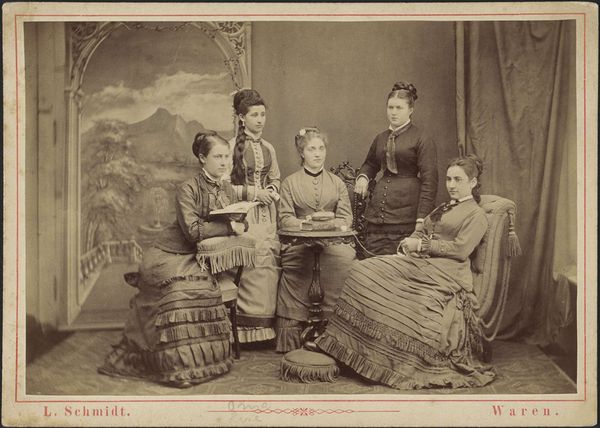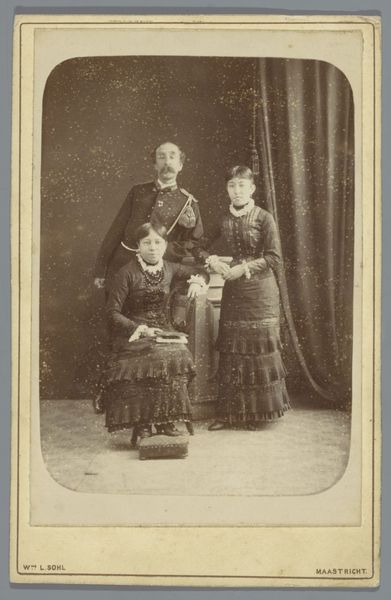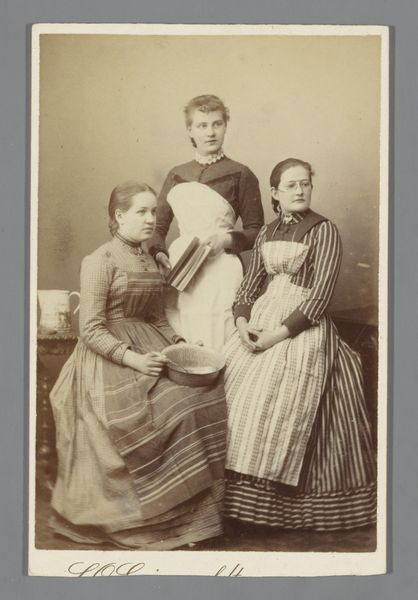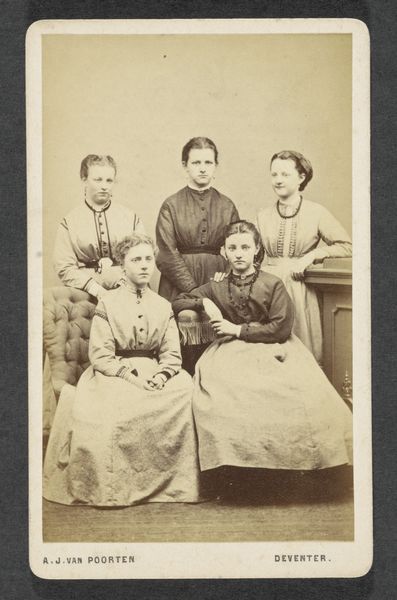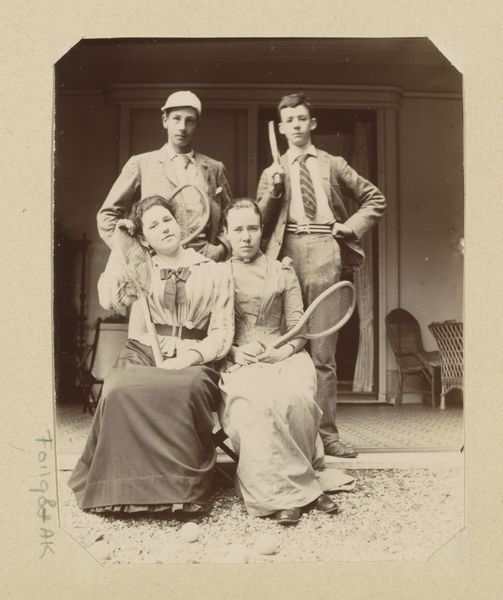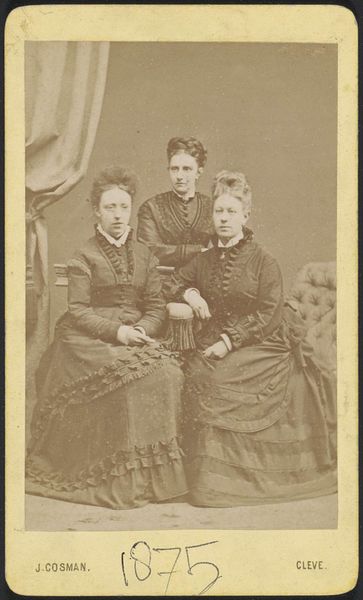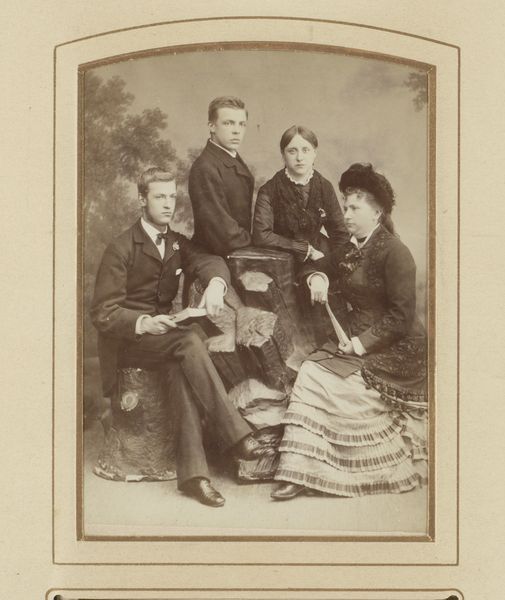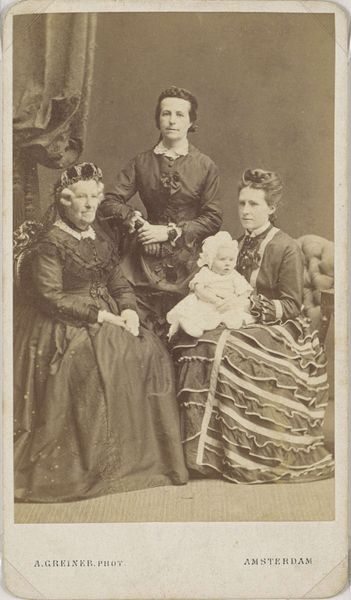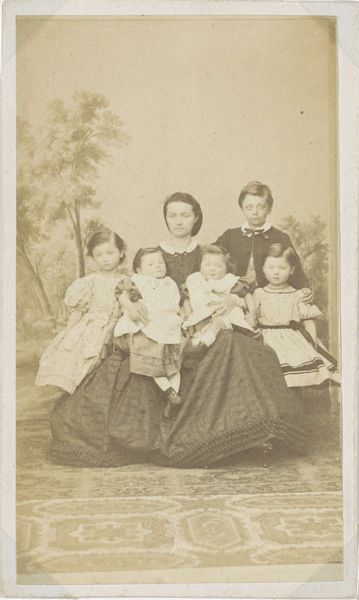
Studiogroepsportret met Charlotte Doorman, A. Avis, L. Funke en I. Lindenhout c. 1885 - 1900
0:00
0:00
photography
#
portrait
#
pictorialism
#
photography
#
historical photography
#
group-portraits
#
19th century
Dimensions: height 139 mm, width 96 mm, height 169 mm, width 108 mm
Copyright: Rijks Museum: Open Domain
Curator: This is a studio portrait titled “Studiogroepsportret met Charlotte Doorman, A. Avis, L. Funke en I. Lindenhout,” taken around 1885 to 1900. The photographer was Albert Greiner. Editor: It feels very formal and posed, almost theatrical, with the slightly blurry background and the women arranged almost symmetrically. There is something a little melancholy about their expressions and muted color palette. Curator: The soft focus and carefully controlled lighting are key characteristics of pictorialism, a movement that sought to elevate photography to the status of art by emulating the techniques of painting and etching. Editor: Right, pictorialism was such a fascinating movement, blurring those established boundaries. And the very staging here seems pertinent: The table acts as a visual anchor, almost like a patriarchal figure they must orient themselves around. What I see is not just a record, but a tableau vivant exploring the restricted roles afforded to women. What kind of 'study group' were they a part of, I wonder, given such a performance? Curator: What strikes me is the tonality—the way Greiner has manipulated the platinum print process to achieve this almost ethereal quality. Note how the light falls gently on their faces and dresses. Editor: The very construction of the image, too—the use of composition, lighting, and their garments—suggested that these are individuals from well-to-do families. One is prompted to interrogate power dynamics represented by wealth and the cultural standards being enacted in these carefully constructed portraitures. Curator: Certainly. These women are clearly members of a particular social stratum, and Greiner's artistry lies in his ability to capture their likeness while adhering to the aesthetic conventions of his time. This photograph is in itself an embodiment of formal artistry within a specific societal milieu. Editor: Looking closer at their garments reveals details such as the tight corsets—objects representing physical confinement imposed by society. Considering that these portraits occurred during movements advocating for female empowerment adds extra interpretive complexity, presenting contrasts which encourage modern viewers into important contemporary discourse on self-expression against social constructs. Curator: In short, Greiner has composed the figures and lighting with superb skill, showcasing refined control over photographic printing and pictorial qualities while imbuing emotional nuance onto tangible materials—hallmarks making studio-photography important for historical study from a variety formal viewpoints beyond cultural aspects themselves! Editor: The artist’s craft successfully merges portraiture with elements of broader artistic practices thereby imbuing its representation within societal history alongside reflections about continuing dialogues on freedom and visibility now for global modern contexts around identity alongside selfhood itself!
Comments
No comments
Be the first to comment and join the conversation on the ultimate creative platform.
